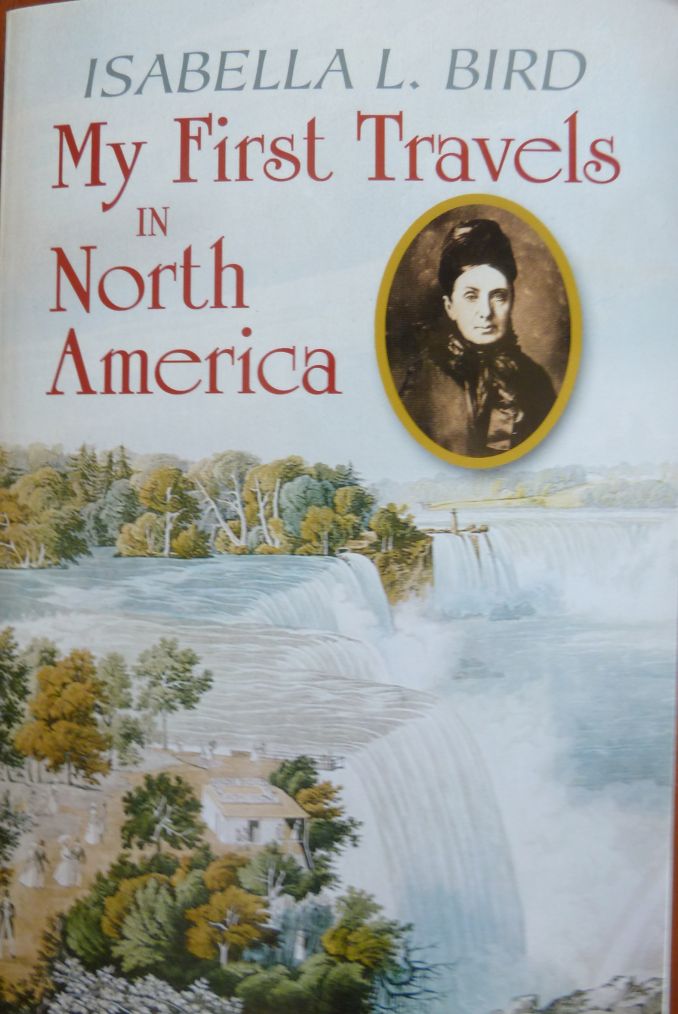“I am looking for books about women of courage in the 19th century,” I tell Roger Page of Island Books.
 “Have you heard of Isabella Bird?” he asks.
“Have you heard of Isabella Bird?” he asks.
I had not. Reading her book My First Travels in North America, I must agree that Isabella L. Bird (1831-1904) is a woman of courage and tenacity. On this first adventure of many, she traveled alone with little fear. She kept up her enthusiasm even after being nearly drowned in a storm on Lake Ontario–a wave swept her overboard, then another came along and swept her back onto the boat. And so on.
Her colorful descriptions are offered through the lens of a traveling Englishwoman who keeps her entertained wits about her. In the “Introduction,” Clarence C. Strowbridge phrases it thus: “Isabella’s book is one of the very best there is for giving an accurate, vivid picture of life in rural and urban areas of the northeastern part of the United States and eastern Canada in the mid 1850s.”
Personally, what I like best is Bird’s conversational tone. The book was compiled after her return based on notes and letters she wrote to her sister during her travels. For the researcher of history, historic accounts of this era are typically dry as dust. But the writing on these pages feels three-dimensional, conjuring clear images and experiences.
It’s not the first time I’ve felt refreshed by the perspective of a woman in the man’s world of the 19th century. I am the archivist for a 159-year-old church, and our “History of Woman’s Work,” a female account of our church history, stands in vivid relief to the history written by the men. The offical history of a pastor’s term of service notes that under the Rev. I. Dillon rallied the Ladies Aid to pay the church mortgage in full. The women’s account reads thus:
The church had a mortgage. Where to get the money was placed before Ladies Aid. Lumber in huge beams was being sent to San Francisco as well as salted salmon in good barrels, and any woman not doing her own bakery was denominated as shiftless. So, how could these church women make enough to clear the mortgage? … One woman with promoter’s vision said, as she addressed the chair: “Let’s have an excursion.” [So the Ladies Aid decided to organize a tour from San Francisco to the northwest.] … the excursionists came, looked and admired the huge trees that stood far up the hillsides of Seattle and loved Victoria, a quaint replica of an English town. When income and expenses were settled the Ladies Aid Society had
$900.00 net, which was promptly used to clear the mortgage on the white church.
—Mrs. Lulu Hall, History of Woman’s Work Vol. I
Talk to me, Lulu and Isabella. I’m all ears.
